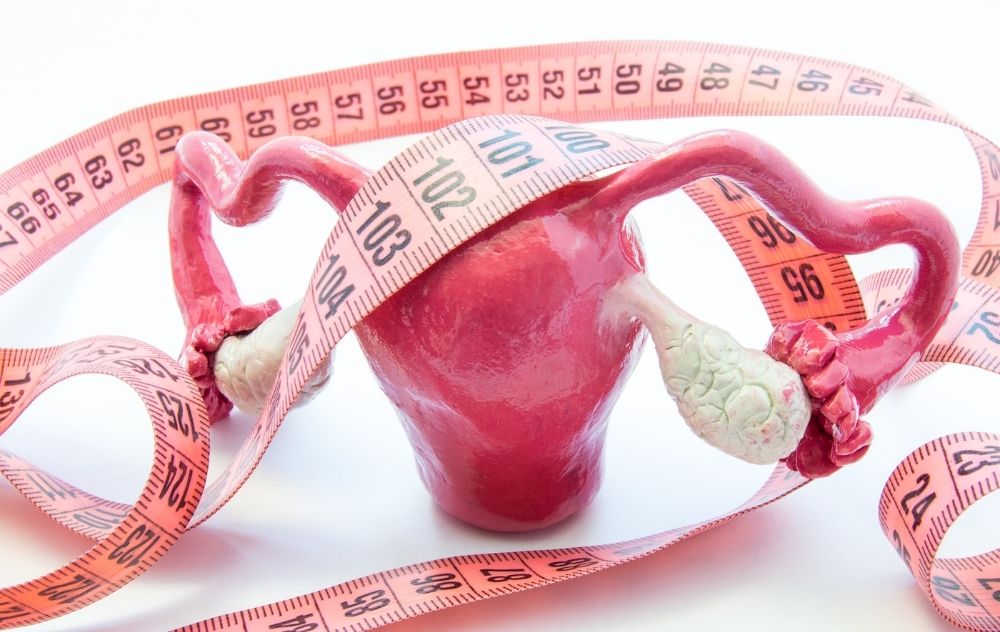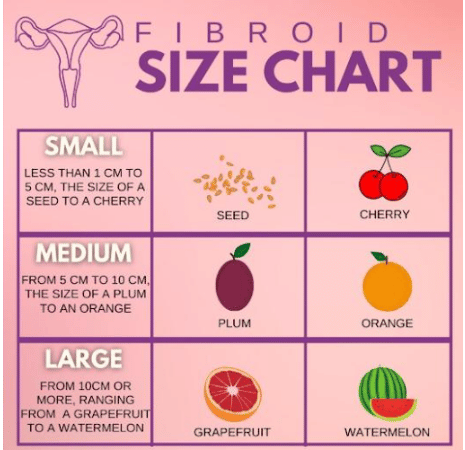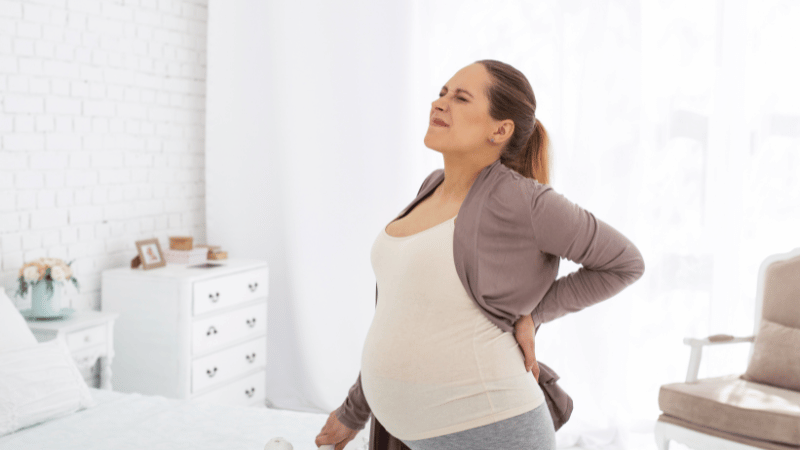
Has your body been sending you subtle (or not-so-subtle) signals lately? Are you experiencing changes in your periods, persistent pelvic discomfort, or unexplained bloating?
The uterus can expand and contract throughout life, especially during pregnancy or as a result of other underlying conditions. For example, when fibroids develop, they can cause significant growth, leading to uncomfortable symptoms such as heavy periods, pelvic pain, and bloating.
While self-diagnosis isn’t possible, understanding the potential signs and how doctors diagnose this condition is crucial for your health. Let’s delve into what you need to know about an enlarged uterus, from recognizing the symptoms to the diagnostic process.
What is a Normal-Sized Uterus?
Uterus size varies depending on age, hormonal changes, and life stage, particularly before and after menopause. However, the size of an average uterus is about the size of a fist, while the weight of the uterus is around 2-3 ounces.
Let’s explore two common reasons for changes in uterus size: fibroids and pregnancy.
Fibroids and Uterine Enlargement
Fibroids are noncancerous growths that can significantly affect the uterus’s size, shape, and weight. Their impact on uterus size depends on their number, location, and size.

Larger fibroids can weigh several pounds, increasing the size of a normal uterus and affecting its regular functions.
Fibroids can develop in different areas of the uterus, with three main types contributing to uterine enlargement:
- Submucosal fibroids grow within the inner lining and often form in clusters, significantly increasing uterus size.
- Intramural fibroids develop within the muscular wall of the uterus, causing it to stretch as they grow.
- Subserosal fibroids grow on the outer surface of the uterus. While they may not always increase overall uterine size, they can put pressure on surrounding organs and cause discomfort.
Enlarged Uterus Symptoms
Fibroids develop in different areas of the uterus, influencing the symptoms you may experience. For example, submucosal fibroids grow within the uterine lining, or endometrium, often causing heavy bleeding and anemia, while intramural fibroids can increase the weight of the uterus.
An enlarged uterus caused by fibroids results in symptoms such as:
- Persistent bloating
- Abdominal pressure
- Frequent urination or difficulty emptying the bladder
- Pelvic and lower back pain
If you’re experiencing these symptoms along with heavy, irregular bleeding, it may be due to fibroids. Consulting a fibroid specialist can help you get an accurate diagnosis and personalized treatment plan that relieves uncomfortable symptoms.
Are Fibroids in the Uterus Dangerous?
Although uterine fibroids are not necessarily dangerous, they can cause health complications if left untreated. Fibroids cause heavy bleeding during and between menstrual periods that can lead to anemia, dizziness, and exhaustion. In addition, fibroids can make it difficult to conceive, depending on their location in the uterus. When multiple fibroids form, they can cause the uterus to expand and mimic a pregnant belly. Even if there is only one fibroid, its growth may enlarge the uterus size to that of a 12- or 20-week pregnancy, leading to various symptoms and discomfort. If you have symptoms, it’s important to discuss them with a fibroid specialist.
Schedule a Consultation With a Fibroid Specialist
How Pregnancy Affects Uterus Size and Weight

During pregnancy, the uterus naturally expands to accommodate the growing baby. The average uterus size during pregnancy typically grows at the following rate:
- First Trimester: At 6 weeks, the uterus size is similar to a small plum. By 12 weeks, it’s about the size of a grapefruit (8-10 cm).
- Second Trimester: At 20 weeks, the uterus reaches the navel, with the fundal height typically around 20 centimeters.
- Third Trimester: The uterus continues expanding, reaching its maximum size at full term. By 36 weeks, the fundal height increases to approximately 36 centimeters.
Individual uterus size and weight during pregnancy can vary based on the number of previous pregnancies, carrying multiple fetuses, and a woman’s body size and shape. Additionally, an individual may already have an enlarged uterus due to the presence of fibroids. If fibroids are present during pregnancy, they may grow due to increased progesterone and estrogen. Sometimes, they outgrow their blood supply, causing severe pain and, in some cases, requiring hospitalization. Additionally, fibroids can affect fetal positioning, increasing the risk of miscarriage, preterm delivery, or the need for a C-section.
Post-Pregnancy Changes in Uterus Size
After childbirth, the uterus shrinks back to its pre-pregnancy size through a process known as involution. Within 6-8 weeks postpartum, it returns close to its original dimensions, but fibroids can complicate this process.
Women with fibroids should consult a specialist for monitoring and management throughout pregnancy. Since women cannot treat fibroids during pregnancy, any treatment must wait until after birth.
If you’re experiencing symptoms of an enlarged uterus accompanied by common fibroid symptoms like heavy bleeding and pelvic pain, our specialists at USA Fibroid Centers can help. Click the button below to schedule an appointment, or call us at 855.615.255.
Treatment Options for an Enlarged Uterus Caused by Fibroids

For women with fibroids, one option for treatment is uterine fibroid embolization (UFE), which is a minimally invasive procedure effectively shrinking fibroids and restoring the uterus to its normal size.
Unlike a hysterectomy, UFE reduces symptoms without major surgery. UFE provides quick recovery, effective symptom relief, and uterus preservation, making it a preferred option for many patients.
How to Monitor Uterine Health with USA Fibroid Centers
Staying proactive about uterine health helps with early detection and effective fibroid management. This management includes scheduling routine pelvic exams and ultrasounds to monitor changes and tracking your menstrual cycle for abnormal bleeding or pain.
Understanding the risk factors for fibroids and uterine enlargement helps you make informed decisions about your health.
If you’re experiencing symptoms impacting your daily life, USA Fibroid Centers is here to help. Our specialists work with you to determine the best treatment plan for your needs. Schedule a free consultation online or call 855.615.2555 to visit one of our facilities and take the first step toward relief.
FAQs
How Much Can Fibroids Increase the Weight of the Uterus?
Uterine fibroids can increase the weight of the uterus by up to several pounds, depending on their size and number. While smaller fibroids may only weigh a few grams, larger ones can weigh several pounds, and multiple fibroids can further contribute to weight gain.
Is it Normal for the Uterus to Stay Enlarged After Pregnancy?
The uterus doesn’t usually remain enlarged after pregnancy. It gradually shrinks to its pre-pregnancy size within about six weeks. This process, known as involution, occurs as the uterus contracts after birth, often causing mild cramps. If the uterus remains significantly enlarged beyond six weeks, or there are persistent symptoms such as abdominal discomfort, heavy bleeding, or unusual swelling, consult a fibroid specialist.
Can Fibroids Cause Pain Even if the Uterus isn’t Significantly Enlarged?
Even with a normal uterus size, fibroids can cause pain based on their location. Submucosal fibroids that grow within the uterine lining make it difficult for the uterus to contract properly, resulting in severe cramping and discomfort. Additionally, larger fibroids, especially subserosal fibroids, can press on nearby organs like the bladder and lead to pain, cramping, pelvic pressure, backaches, or discomfort during intercourse. Fibroids can also become painful during degeneration, where the tumors outgrow their blood supply causing the tissue to die. Fibroid degeneration leads to sharp, intense pain due to chemicals from the tissue being released into the body. This process emphasizes the need for early treatment to avoid complications like degeneration.



